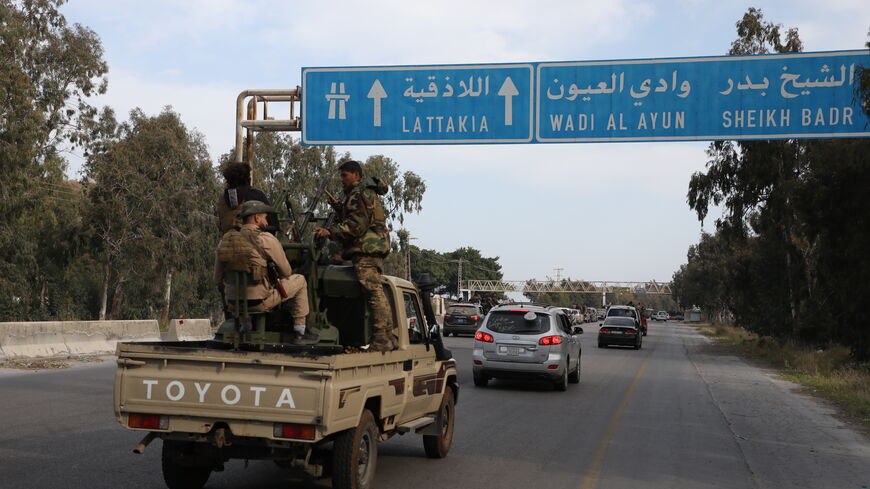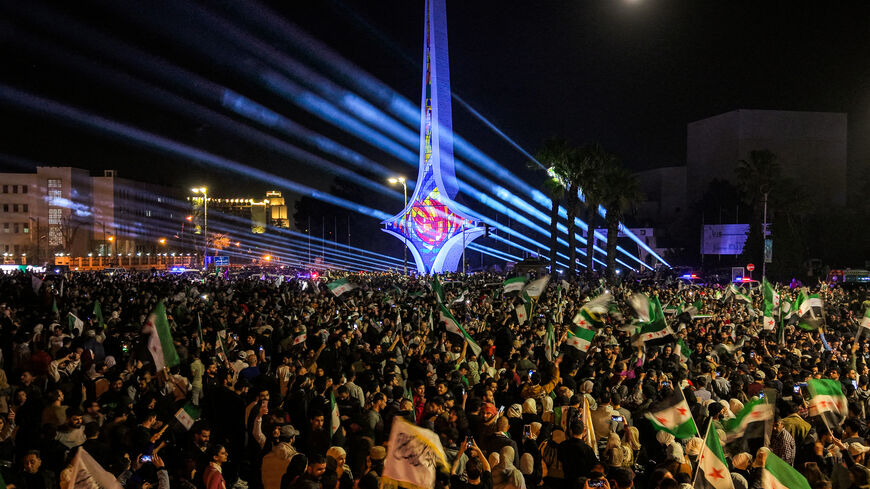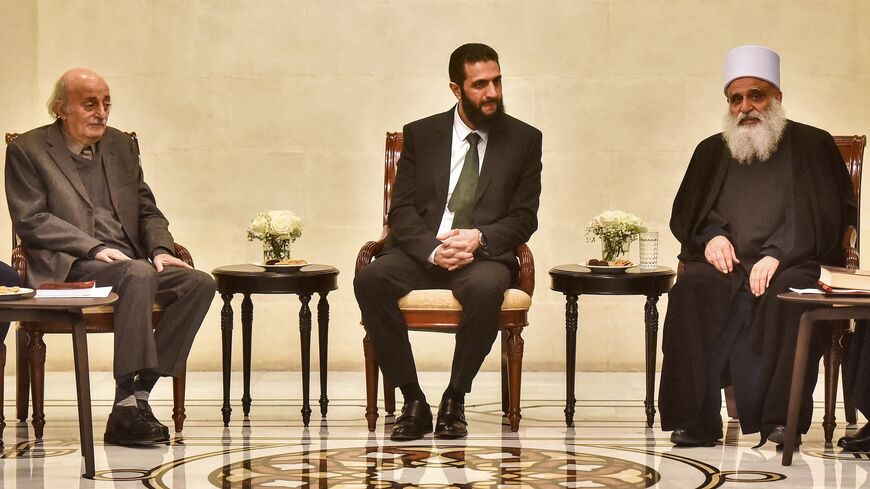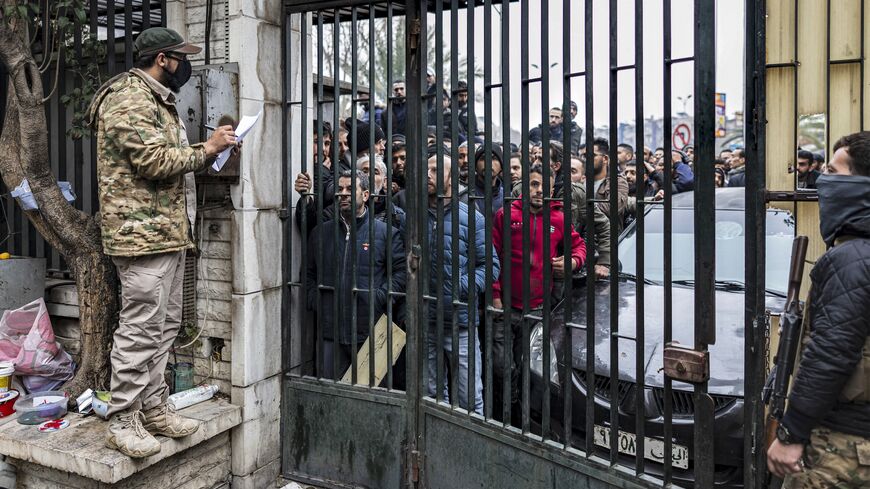Syria's president announces deal to integrate Kurdish-led SDF into state structure
The new government in Damascus is seeking to integrate all armed groups in Syria under its command.
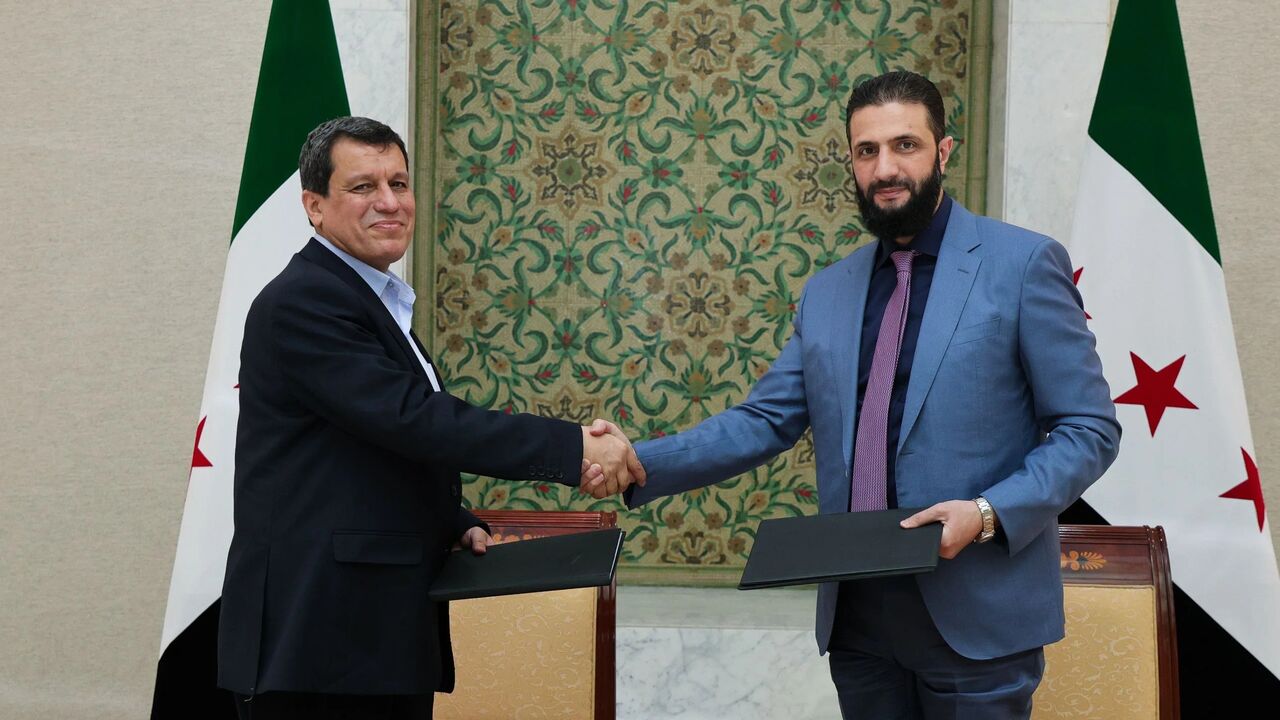
Syria’s transitional government has reached a deal with the Kurdish-led Syrian Democratic Forces to integrate the latter into the country’s institutions.
The transitional government said in a post on X Monday that an agreement was signed “stipulating the integration of the Syrian Democratic Forces into the institutions of the Syrian Arab Republic and emphasizing the unity of Syrian territory and rejecting division.”
Syrian interim President Ahmed al-Sharaa and SDF leader Mazlum Kobane signed the agreement in Damascus.
The two agreed on the following points, Syria’s official news agency SANA reported.
- Guaranteeing the rights of all Syrians “to representation and participation in the political process and all state institutions” regardless of ethnic or religious background
- Recognizing Syrian Kurds “as an integral part of the Syrian state”
- Establishing a ceasefire throughout Syria
- Integrating all civil and military institutions in northeastern Syria into the Syrian state, including border crossings and airports as well as oil and gas fields
- Ensuring the return of displaced Syrians to their homes
- Supporting the government in efforts to combat “remnants of the Assad regime,” a reference to militias affiliated with former President Bashar al-Assad
- Rejecting hate speech and division
SANA added that the two agreed to work to implement the agreement by the end of 2025.
The government in Damascus, led by Islamist former rebel group Hayat Tahrir al-Sham, had been calling on the SDF and other armed groups that formed during the 13-year civil war to integrate under the command of the new Defense Ministry, but an agreement with the Kurdish-led force has been elusive.
The SDF formed in 2015 and is backed by the United States in its fight against the Islamic State. The SDF captured ISIS’ final territory in Syria in 2019 and holds tens of thousands of ISIS fighters and their families in detention centers.
HTS led the rebel offensive that toppled Assad in December.
Why it matters: The SDF is the main military force of the Democratic Autonomous Administration of North and East Syria. The administration has a significant degree of autonomy — controlling its own border crossing with Iraq, for example. There is an airport in Qamishli, the region’s administrative capital. The Kurdish-led authorities began supplying oil from fields they manage in the northeast to Damascus last month.
The deal to integrate the SDF into the new Syrian state could placate Turkey. The SDF and the Turkish-backed Syrian National Army, a rebel group that fought alongside HTS in the civil war, clashed in December following the overthrow of Assad. Turkey and its SNA allies began on-and-off military operations against the SDF in 2016.
Ankara considers some Kurdish groups within the SDF to be affiliates of the PKK. The SDF has downplayed its affiliation with the PKK.
In January, Turkey threatened a new military intervention against the SDF.
Turkey is close to the new Syrian government, and Sharaa visited Ankara last month.
Kurds have historically faced discrimination in Syria and were barred from being able to use their language under the rule of Assad and his father, Hafez al-Assad, among other forms of discrimination.

